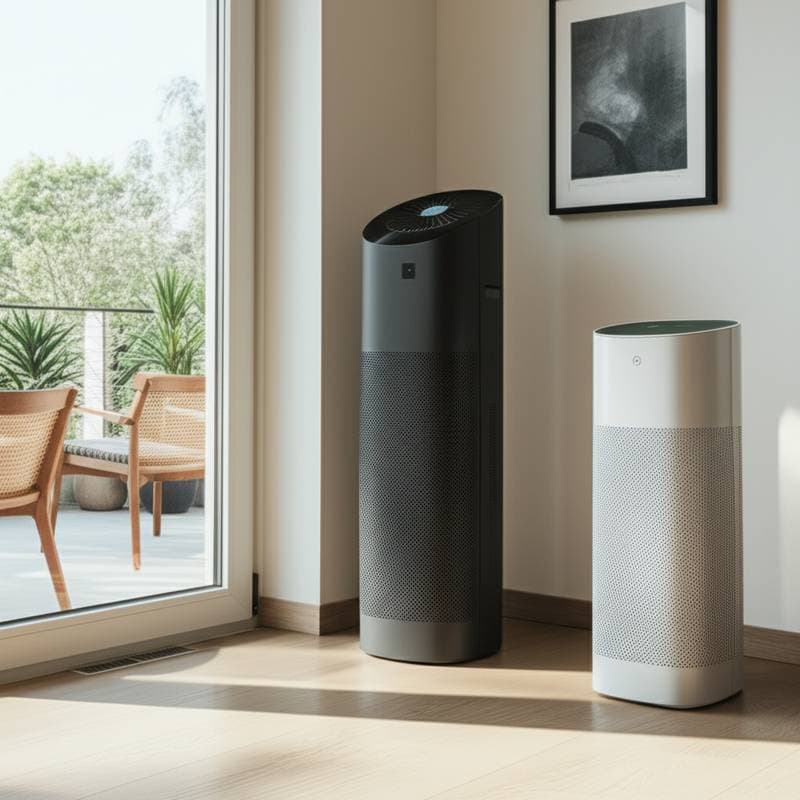HEPA 14 Air Purifiers Dominate Indoor Air Market
Clean air has become the new cornerstone of comfort at home. What used to be a quiet corner appliance is now a centerpiece of health-conscious living. HEPA 14 air purifiers, once limited to hospitals and laboratories, have entered everyday homes. Their medical-grade filtration is reshaping how people think about indoor air, combining science with daily practicality.
Why HEPA 14 Matters
HEPA 14 filters capture up to 99.995 percent of particles as small as 0.3 microns. That means pollen, fine dust, bacteria, and smoke are removed before they reach your lungs. For families managing allergies or respiratory sensitivities, the difference is instantly noticeable. The air feels lighter, fresher, and cleaner, not in a perfumed way but in the absence of lingering irritants.
Unlike lower-rated filters, HEPA 14 models meet strict medical-grade standards. The result is not just cleaner air but a measurable improvement in overall wellness. Designer and air-quality consultant Lena Kraus explains, “People are realizing that good design includes invisible comfort. You can’t see clean air, but you can absolutely feel it.”
At a Glance
- Filter grade: HEPA 14 (medical level)
- Particle removal: Up to 99.995% efficiency
- Common uses: Homes, schools, offices, small medical spaces
- Average price range: Mid to upper tier, depending on size and features
- Maintenance: Filter replacement every 6 to 12 months
The Design Shift
Manufacturers are responding to growing demand with models that blend function and aesthetics. Sleek silhouettes, matte finishes, and quiet operation have replaced bulky white boxes. Some units now double as side tables or include soft-glow night lighting. Others integrate smart sensors that adjust fan speed based on detected air quality.
For renters or small-space dwellers, compact units with a footprint under 12 inches by 12 inches make clean air accessible without crowding a room. Larger households can install multi-room systems that connect to Wi-Fi and provide data tracking through apps.
Material and Performance Choices
Premium models pair HEPA 14 filters with activated carbon layers to trap odors and volatile organic compounds from paint or cooking. Brands like Blueair, Philips, and IQAir lead in this segment, offering options that range from portable tabletop units to heavy-duty floor models.
Budget-conscious consumers are also finding reliable alternatives. Some companies now sell modular purifiers where the filter cartridge can be upgraded to HEPA 14 when needed, extending the life of the device and reducing waste.
Living with the Upgrade
The real value of medical-grade air purification shows up quietly over time. Less dust settles on furniture. Sleep comes easier. Pets shed without filling the air with dander. In small apartments, where cooking aromas linger and ventilation is limited, the improvement feels almost like moving into a new space.
For many households, the choice to invest in HEPA 14 technology reflects a deeper shift toward wellness-centered living. Clean air is no longer a luxury reserved for clinical settings. It is part of designing a home that supports health, comfort, and peace of mind.
Making It Work
Start by measuring your main living area and match it with a purifier rated for that square footage. Keep doors open to allow airflow between rooms. Replace filters on schedule, and vacuum vents to maintain performance. If budget is tight, prioritize one high-quality unit in the bedroom where you spend the most hours breathing.
When the air feels easier to breathe, everything else follows. Better rest, fewer headaches, and a calmer atmosphere remind you that design is not only about what you see but also what you no longer notice. Clean air, quietly achieved, is the most beautiful design element of all.
